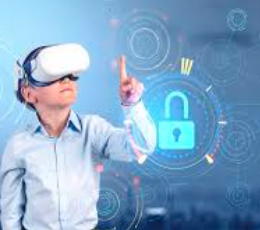Educational technology (EdTech) has become a cornerstone of personalized learning, offering tools that adapt to student needs, support varied learning styles, and enhance engagement across subjects. When thoughtfully integrated, EdTech empowers educators to tailor instruction while enabling students to take greater ownership of their academic journey. Here’s how to make the most of EdTech to support personalized learning in any educational setting.
1. Begin with Learning Goals, Not Tools
Start by identifying what you want students to learn. Choose EdTech tools that align with these goals rather than selecting software based on popularity or novelty. When technology serves a clear instructional purpose, it becomes a powerful extension of personalized learning.
2. Use Adaptive Platforms for Differentiated Instruction
Adaptive learning platforms can adjust content and pacing based on student responses. These systems provide real-time feedback and offer personalized practice pathways. Educators can use the insights to identify gaps, adjust instruction, and ensure that each student progresses according to their readiness.
3. Incorporate Student Voice and Choice
Select EdTech tools that allow students to make meaningful choices. This could include selecting topics for research, choosing how to present findings (e.g., video, slideshow, blog), or setting learning goals within digital platforms. Choice fosters agency and engagement, two key pillars of personalized instruction.
4. Use Learning Management Systems to Organize Pathways
A well-structured learning management system (LMS) enables educators to curate content, organize assignments, and offer varied learning tracks. Students can navigate resources at their own pace, revisit material as needed, and submit work in diverse formats—all within a cohesive digital space.
5. Leverage Collaboration and Communication Tools
Personalized learning doesn’t mean learning in isolation. Use EdTech platforms that support peer interaction, discussion forums, and collaborative projects. Tools that enable real-time feedback and discussion can help build community and deepen learning, even in individualized settings.
6. Track Progress with Data Dashboards
Many EdTech platforms provide dashboards that visualize student progress. Teachers can use this data to identify strengths, target areas for support, and guide small-group instruction. Students can also use progress trackers to reflect on their growth and set new goals.
7. Ensure Equitable Access and Digital Literacy
Personalized learning through EdTech must include equitable access for all students. Provide training on digital tools, ensure availability of devices and internet access, and offer support for learners who may need extra guidance. Empowering all students to use technology confidently is essential to successful personalization.
Conclusion
EdTech integrations open new possibilities for personalized learning by offering tools that adapt to individual needs and encourage student agency. By focusing on purposeful implementation, data-driven instruction, and inclusive access, educators can harness the full potential of technology to create learning environments where every student can thrive on their own path.






